image by Sergio Cerrato/Pixabay
article by Root Cuthbertson 2023 ![]()
part of a series on Regenerative Design Principles
Interdependence is a vital principle of living systems and of all known ecosystems. It means mutually depending on or relying upon one another. Every living thing relies upon something to survive, and every living thing provides a resource that helps the survival of something else. Almost all known species depend on others to some degree.
"Interdependence – the mutual dependence of all life processes on one another – is the nature of all ecological relationships, a basic principle of ecology. The behavior of every living member of the ecosystem depends on the behavior of many others." – Fritjof Capra
Ecosystems
The interdependence of different species contributes to the overall functioning of the ecosystem as a whole. At the ecosystem level, various organisms rely on geophysical factors (temperature, moisture, pH, salinity) and biological processes (like nutrient cycling or availability, waste production or decomposition). In an ecosystem, interdependence and cooperation sustain many cyclical exchanges of energy and resources (see 1-4 Cooperation). Waste for one organism is often food for another, so that, as a whole, the ecosystem has no waste (see 8-3 Recycling materials). Organisms in living systems tend to associate, connect, cooperate, and even live inside each other interdependently (more on that later).
Interdependence is characteristic of networks, ecosystems, and complex adaptive systems. Any member of such a system both affects and is affected by others, both within the same system, and within neighboring systems (see 1-2 Nestedness). Ecosystems are often networked with neighboring ecosystems, mutually relying on interconnected structures, processes, or functions (often with multiple feedback loops) related to stability, productivity, or biodiversity (see 1-7 Networks). For example, a network of terrestrial plants can rely on the neighboring underground fungal mycelium to exchange information and resources. Such systems are composed of interdependent individuals and components, which can be quite diverse, interacting in a variety of ways. Interdependent feedback loops can amplify disturbances so they ripple and spread throughout an ecosystem (see 3-3 Feedback). Based on communication or exchanged information, individuals can adapt and update their strategies in response to others, or to changes in conditions, or to aspects of the wider system. This can lead to living systems self-organizing and evolving new patterns.
Examples
Maria Popova provides several examples of paired interdependence:
- The gutless marine tubeworms of the genus Riftia, who cluster in the hydrogen-sulfide-rich waters near geothermal vents, and can only obtain nutrition from the bacteria that live inside them.
- The Convoluta roscoffensis flatworms in coastal Brittany who rely on hosting Platymonas green algae within their cells.
- The Mastigias jellyfish whose tiny green umbrellas are animated by single-celled zooxanthellae.
- The giant clam, Tridacna gigas, which orients its entire colossal body toward the light for the benefit of the greenhouse of algae living inside it.
- The Bay of Naples jellyfish, described by Lewis Thomas, which becomes permanently affixed as a vestigial parasite to a nudibranch sea slug’s mouth.
Examples of multi-species interdependence include:
- Coralline algae that depend on sea urchins to exclude kelps.
- The Plachobranchus snail that hosts within its cells a garden of photosynthetic microbes.
- The many plant species of grasslands and heathlands that depend on migrating herds, like cattle, to exclude trees and shrubs.
- The many species of migratory birds that depend on various species within both tropical and temperate habitats.
- We humans, who, for proper digestion and absorption of nutrients, rely on a variety of microbial species, including E. coli, that live within our gut microbiome.
Coevolution
The examples of interdependence visible today have arisen over time as species co-evolve in relationship to each other. Co-evolved species reciprocally affect each other, often creating an interdependent relationship where everyone mutually benefits. Coevolution can be pairwise, between exactly two species; or it can be multi-species, when several species evolve alongside each other. For example: many species of flowering plants have coevolved with several species of pollinators. Coevolution is a process of members of living systems interacting and adapting, often becoming increasingly reliant on each other.
Some species are co-evolved so closely, and have become so dependent on each other, that if one declines, so does the other; the extinction of one can mean the extinction of the other. For example: when populations of the Indian rubber tree declined, its co-evolved pollinator wasp declined to near extinction. Another example is the coevolution of various pollinator species who cooperate to survive harsh conditions. Whenever one of these species declines, any interdependent species also decline, which can lead to a simultaneous population collapse.
A common form of disturbance in ecosystems is when such a decline or extinction happens, especially in a keystone species. Whenever key relationships are disrupted, ecosystems can become more vulnerable to declines, collapses, or even extinction cascades, involving many interdependent species throughout an ecosystem. And, the converse is true: whenever a declined keystone species is re-introduced to a degraded ecosystem, the entire ecosystem can recover.
For example: when authorities at Yellowstone National Park re-introduced wolves to reduce elk populations, many habitats recovered and began thriving, since plants could more easily grow along the riverbanks, stabilizing the soil, preventing erosion, and changing the course of the Yellowstone river. For example: when Monterey Bay authorities began protecting sea otters, the otters reduced the sea urchin population, allowing kelp forests to re-grow, providing habitat for more fish and marine wildlife.
This is an important point: species that co-evolve interdependently often come to rely upon each other so much that they cannot exist without each other.
Kelp forest ecosystems, where sea otters are keystone species, are interdependent with redwood forest ecosystems.
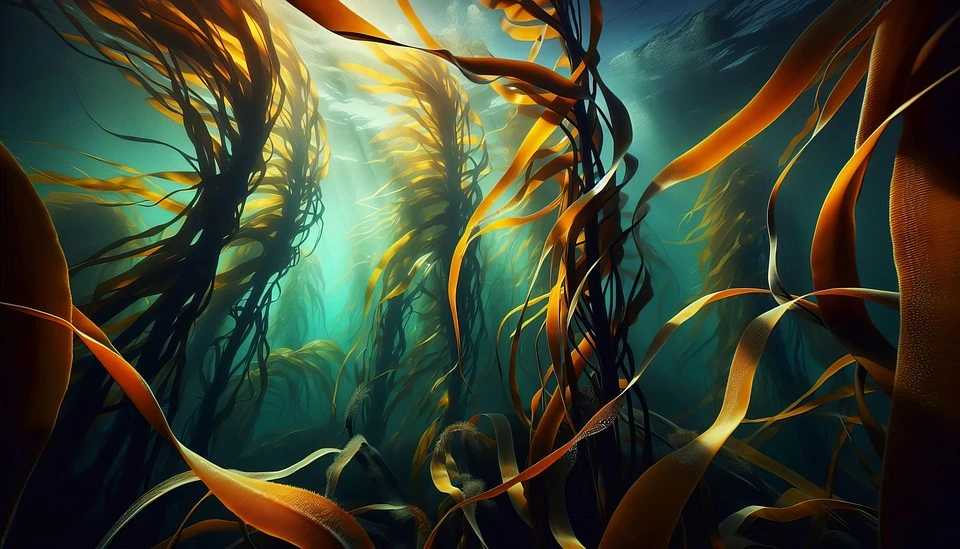
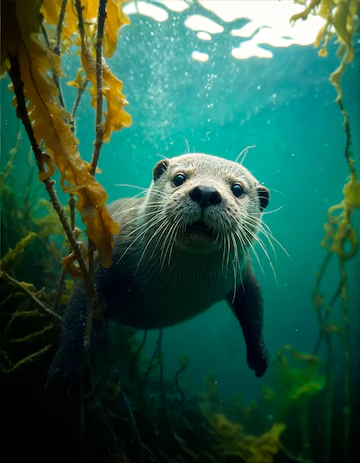
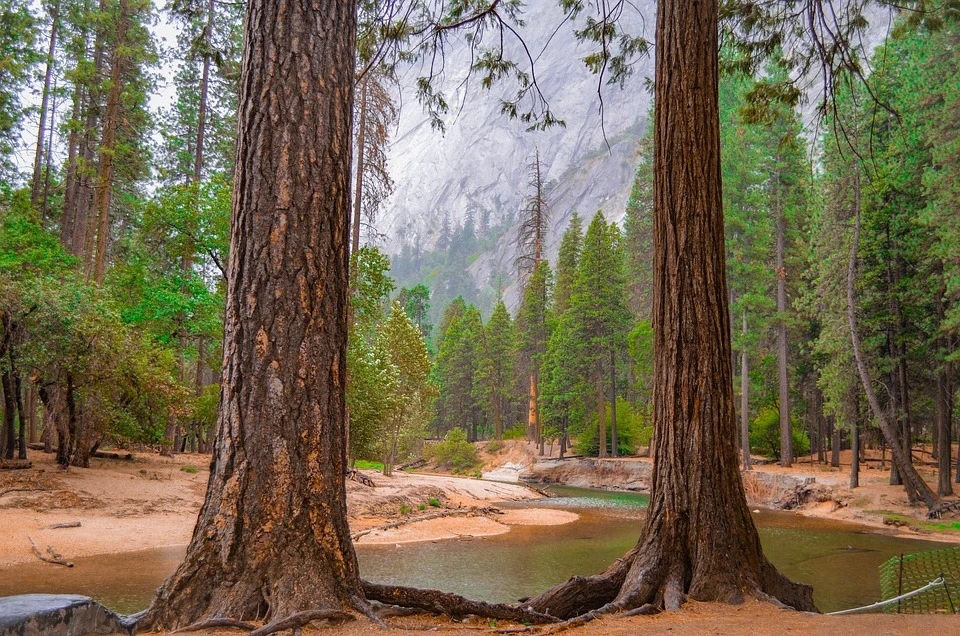
image by Jack Drafahl/Pixabay image by Freepik photo by Veena Avinash/Pixabay
Reliance, Uncertainty, Trust
Caution: Hazard! If you were raised in a westernized society, you may hold some limiting beliefs about reliance, and may easily confuse reliance with trust. This has happened a lot. You may have been conditioned to believe in separation and individualism, scarcity and competition. You may believe (consciously or unconsciously) that self-reliance is best, and that relying on others is risky. You may aim to reduce your reliance on others as much as possible; to assure a future where you can more predictably control favorable outcomes, where you can maximize your own self-interest. You may prefer to avoid uncertainty whenever possible. If you must rely on others (which involves uncertainty), you may assume that a 'predict-and-control' approach will be most advantageous for you. The principle of interdependence suggests an alternate view. The future is often uncertain. Uncertainty can be easier to face together. What if relying on others were reframed from being a weakness, to being a strength? How might your relationships with and reliance on others serve you well? Might they make it easier for you to find support in times of need? Might they even help you to find more meaning and fulfillment?
Since you are alive, and all living beings are dependent on others, you do not have a choice about your reliance. You may also have, ultimately, very little control over your reliance. You do, however, have a choice about where you place your trust. Trust is different from reliance in several ways. Trust is part of many human interactions, since it involves an attempt to resolve the fears of dependency by creating an alternative to control. Instead of controlling you to do what I want, I can trust you to do something we can both agree on. This involves accepting the risk of being betrayed. If you do not act as we agreed, I may feel betrayed. This differs from reliance, which can be disappointed, but not betrayed. For example: if I rely on a migrating species to arrive every spring, and it does not arrive, I would not feel personally betrayed. I would feel disappointed, and suffer the consequences, likely sharing my suffering with everyone else who also relies on that migration.
Identity
“The exquisite interdependence of nature — an elemental awareness of which we so easily and habitually lose sight – is an awareness which, when fully apprehended, dissolves the very notion of a discrete self.” – Maria Popova
Living systems are full of interdependent relationships that make it very difficult to discern where one identity ends and another begins. If who I am is dependent on my relationships with a host of 'others,' like the multitude of bacteria living in my gut microbiome, how is my identity defined? How does the principle of interdependence affect the concept of identity?
In westernized societies, identity is commonly framed as an 'either-or' opposition: self and other are viewed as separate, distinct, mutually exclusive, often in competition. The principle of interdependence suggests re-framing this view toward a 'both-and' integration: self and other are viewed as interconnected, co-created, mutually dependent, often in cooperation. This may also re-frame how much it is possible for 'others' to exist separately from an individual 'self.'
john a. powell and the team at the Othering and Belonging Institute show how the process of 'othering' has led to many of the social divisions and polarizations of modern times. They suggest as an antidote a process of 'bridging' socially constructed divides so as to create a world where everyone can feel 'belonging.' Because in the living world, and in any living system, everyone actually does belong (see 2-5 Webs of Belonging).
Ubuntu
The philosophy of 'ubuntu' is found in cultures across western, central, eastern, and southern Africa. With some variation, it generally includes the concept of an individual's identity being nested within a community context. In this expanded view of identity, each individual is simultaneously a whole entity unto itself, and a member of a larger whole (see 1-2 Nestedness). Often conveyed by the Zulu phrase “I am because you are,” ubuntu can be viewed as one way to express the principle of interdependence.
Ubuntu distinguishes 'individualism' from 'individuality.' The western construct of individualism tends to overfocus on the self's identity as separate from all others, reinforcing egotism, narcissism, and sociopathy. By contrast, ubuntu promotes individuality by suggesting that personal growth, maturation, and achievement is greatly helped (and maybe even only made possible) by the support an individual receives from their community. All individuals are nested within, and largely dependent on, a wider community. Because individuals rely on such relationships, they tend to honor those relationships. With some variation by culture, this may look like reciprocation, exchanges of equal value, fulfillment of duties, honoring of obligations, or other forms of mutual aid that recognize an individual's responsibilities as a community member. In some cultures this extends to include both human and non-human relationships in the natural world.
Ubuntu can include these key points:
- Individual well-being is interconnected with, and often reliant on, the well-being of others, especially those who share a community context (see 4-1 Health).
- Community well-being is promoted through an unconditional recognition and appreciation of individual uniqueness and difference (see 2-1 Niches/Roles).
- Individuals within a community mutually support each other to self-actualize and mature (see 6-1 Maturation).
- Relationships, even when broken or disharmonious, can still be valuable and authentic. By promoting ways to repair relationships and restore harmony, a community can aim to address individual imperfections, since individual redemption is always possible and worth investing in. (see 4-7 Ecology of Support/Holistic Repair)
- All beings, humans and non-humans, are co-creators in a balanced ecosystem. Individuals are responsible for maintaining this balance (see 4-5 Collective Responsibility).
- Individuals within a community recognize the value and importance of others, and the mutual responsibilities everyone has toward each other (see 1-1 Connection).
- Identity is not embedded in any one individual. Because we participate in each other's co-creation, we owe our identity to each other; we belong to each other.
- The individual self is not a rigid subject, but a shared dynamic co-creation dependent on relationships with others, and the continued co-creation of 'otherness' outside and beyond the individual.
- An individual 'self' is affirmed and intersubjectively co-substantiated through recognition of an 'other's' uniqueness and difference.
Interbeing and Contingency
These last few points overlap with the concept of interbeing, articulated by Buddhist monk and author Thich Nhat Hanh and promoted by regenerative design researcher Daniel Wahl. Hanh's ideas about interbeing were influenced by Lewis Thomas's articles on biological interdependence. Hanh liked Thomas's description of symbiosis, seeing how it could expand from the micro level (my body is composed of interdependent cells) to the macro level (every living thing is like a cell in the body of planet), so that nothing truly exists independently. For Wahl, embracing the concept of interbeing involves a shift in perspective. 'Self' and 'other' can be re-framed as interbeing, mutually depending on each other. Ultimately, we all depend on relationships with others in a 'delicate reciprocity.' Wahl emphasizes the importance of such relationships, that we are always in a 'process of relating' with our human and non-human neighbors. Kriti Sharma agrees, adding that individuals are complex webs of such 'processes of relating.' Because each individual can only exist within a web of interdependent relationships, anyone's existence is contingent upon those relationships. All individuals are interdependent to such a high degree, that we bring each other into existence, and cannot exist without each other.
“We live in an interdependent world. Every life form is interdependent with all of the others in its ecosystem. When living systems are undamaged, this interdependence is seamless; there are no absolute distinctions among parts.” – Carol Sanford
Community and Success
A community is a collection of interdependent individuals (often with some similarities) who form relationships and interact regularly over time. Communities can form on any level of scale. Micro level communities include the human gut microbiome, or any kind of SCOBY; meso level communities include the underground fungal mycelium, or oceanic plankton; macro level communities include multispecies ecosystems like forests, deserts, or grasslands. For example, a forest ecosystem – itself a distinct community – may include several other communities nested within it: a tree community, a soil community, an insect community, a bird community, an animal community – each with several different species.
Interdependence in a community shows up in relationships and interactions. For example, in a forest ecosystem, plants provide animals with food, shelter, and oxygen. Animals help plants by providing carbon dioxide, nitrogenous waste, soil disturbance, pollination of flowers, and dispersal of seeds. Microbes may help by fixing atmospheric nitrogen, decomposing dead organic matter, or allowing nutrients and minerals to flow and cycle through the ecosystem.
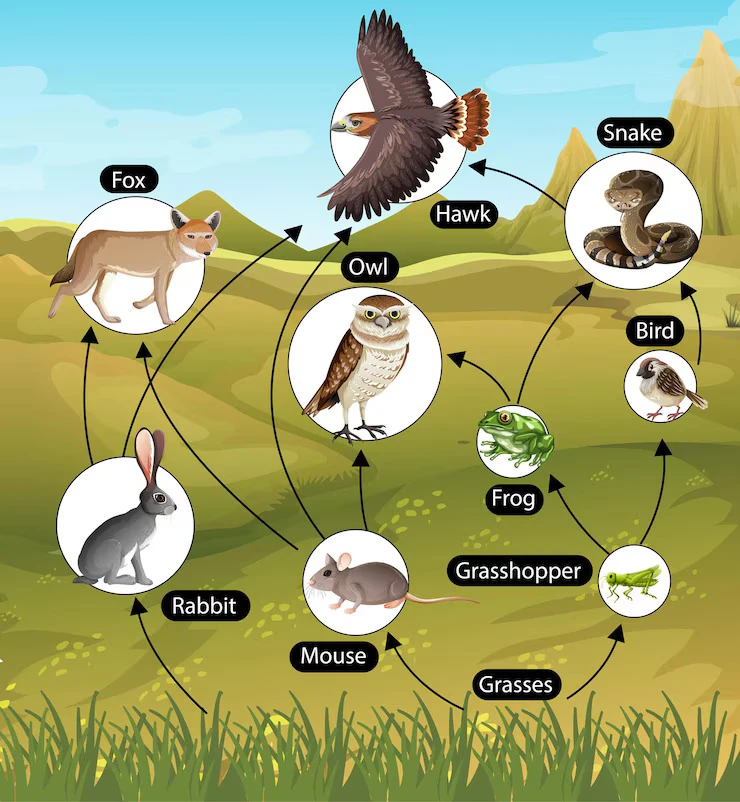
image by brgfx/Freepik
According to the holistic theory developed by Frederic Clements, a community is defined by the relationships and interactions of its members. Each individual contributes toward community well-being, often by assuming a particular role or niche (see 2-1 Niches/Roles). Many (and often most) of these roles are vitally important for collective well-being, due to interdependence. Clements viewed communities as non-random formations with discrete edges or boundaries (see 3-4 Membranes/Thresholds) that arise due to coevolution, even likening them to superorganisms (like bee, ant, or termite colonies).
Fritjof Capra suggests that interdependence provides and incentive for individuals in a community to tend relationships in several dimensions: “between members, between the community as a whole and its natural environment. Nourishing the community means nourishing all these relationships.”
“The success of the whole community depends on the success of its individual members; while the success of each member depends on the success of the community as a whole.” – Fritjof Capra
As in ubuntu, individual success is interlinked with (and interdependent on) the success of the community. Daniel Wahl expands this view to include the whole biosphere: “Our individual and collective success depend on the health of the whole and the community of life” (see 1-2 Nestedness; see 1-8 Wholeness; see 4-1 Health).
Microbiome
Half of the Earth's biomass is made up of trillions of single-celled microbes that live, literally, everywhere – in all the waters and oceans, in all types of soil, within the bodies of plants and animals, in the atmosphere, in places without any oxygen; even in the vaccuum of space. Collectively called the 'microbiome', these simple creatures are still today the dominant form of life on Earth, as they have been for millions of years. They represent the majority of biodiversity on the planet, despite more complex life forms having been studied and researched more. We humans have only begun to learn about these many diverse micro-organisms.
Throughout her career, evolutionary biologist Lynn Margulis explored a tiny fraction of the microbiome, challenging and expanding our understanding of what is possible. Her pioneering discoveries, which contradicted the prevailing neo-Darwinist views of the time, were ridiculed at first before eventually gaining widespread acceptance. We owe much of what we now know about microbial interdependence to Margulis and the many researchers she inspired.
“We animals, all thirty million species of us, emanate from the microcosm. The microbial world, the source and well-spring of all life, informs our own survival. A major theme of the microbial drama is the emergence of individuality from the community interactions of once-independent actors. The tendency of 'independent' life is to bind together and reemerge in a new wholeness at a higher, larger level of organization.” – Lynn Margulis
Attempting to fill in some of the gaps Charles Darwin left in his theory of evolution, Margulis proposed that cooperation, much more than competition, is the basis of evolution and speciation (see 1-4 Cooperation). Pointing to the many examples of mutually beneficial symbiosis she found in the microbiome, she suggested that 'symbiogenesis' – becoming symbiotically interdependent – is common for the majority of microbial life. Since single-celled organisms are everyone's shared ancestors, this must hold true for all life on the planet. Margulis asserted that interdependent cooperation is the baseline pattern for every living system, a successful survival strategy continuously employed for millenia up to today. While competition also occurs, it is less frequent, less important, and less often a driver of evolution. Her theory, which contradicted dominant capitalist ideas promoting individualism, was unapologetically influenced by socialist thinkers like Peter Kropotkin, who coined the term 'mutual aid,' and whose ideas prefigured symbiosis.
Microbes form many kinds of symbiotic relationships, often resulting in interdependence. In a 2023 review of Margulis' work, Salome Rodeck writes:
“Increasingly, microbes are seen as indispensable symbionts to all other forms of life, including humans. They provide essential nutrients and break down organic material. Every ecosystem on the planet, it seems, is dependent on the wellbeing of microorganisms. The knowledge that humans are dependent on their symbioses with invisible critters has captured the attention of many who advocate for a new worldview that emphasizes cooperation and indeed commune-like ways of living by considering symbiosis as a guiding principle."-- Salome Rodeck
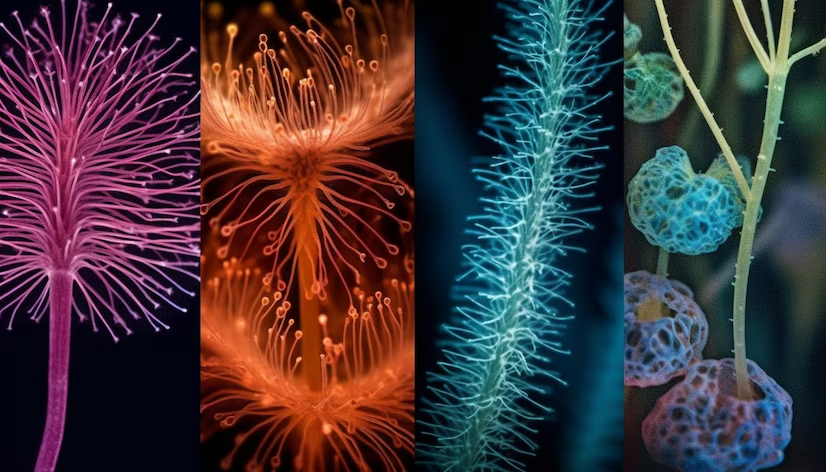
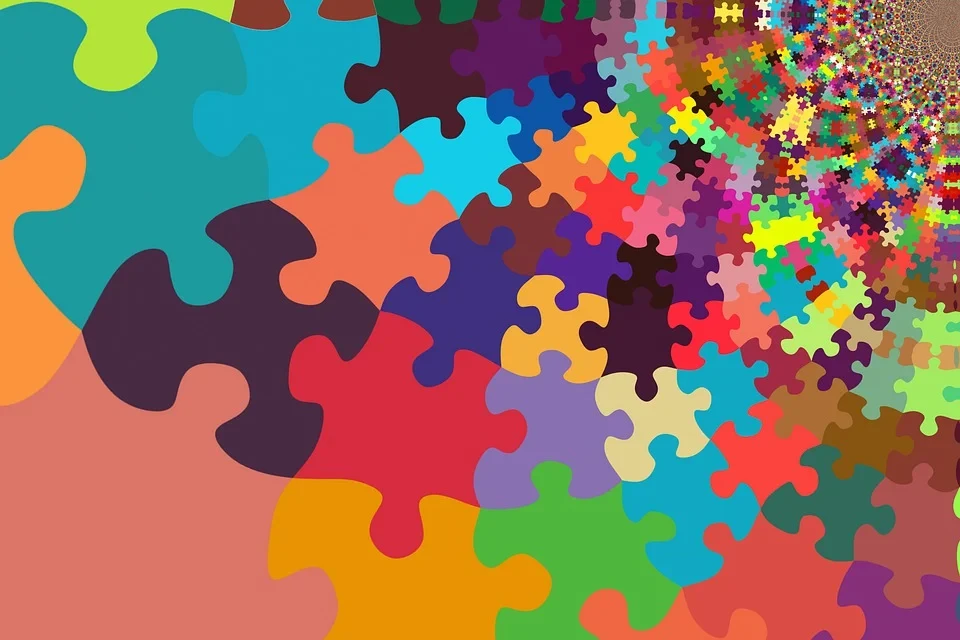
image by Freepik image by Gerd Altmann/Pixabay
Endosymbionts
Lynn Margulis theorized that all forms of multicellular life originated when single-celled organisms began cooperating so much that they became interdependent. The story goes like this: long ago, one ancient single-celled organism engulfed a smaller one, and instead of breaking it down for parts and digesting it, the host integrated the newcomer, intact and whole (now called an 'endosymbiont'). They began to interrelate, and over generations, they coevolved to become interdependent.
Plenty of evidence supports this theory. Every animal cell contains organelles called mitochondria which evolved from endosymbionts. Mitochondria reproduce independently from their host cells; they contain their own separate DNA; they have a double membrane, as if their ancestor were ingested long ago. Every plant cell contains organelles called chloroplasts (plastids), which are remarkably similar to photosynthetic cyanobacteria. The only reason plants can photosynthesize at all is because their cells contain these endosymbionts.
Once researchers started looking, they began to find endosymbionts all over the place. Many fungi host bacteria, including one that produces a toxin to defend against nematodes. Nearly all plants host bacteria without which they cannot live. All vascular plants host a bunch of endosymbionts including viruses, bacteria, protozoa, fungi, and microalgae. Each symbiotic relationship helps the host plant to grow and develop, absorb nutrients, or defend against stressors; one even enables the sequestering of toxic metals and pollutants.
Collective Genome
Many hosts and their endosymbionts coevolve to share a 'collective genome.' This often means they can no longer survive on their own. An endosymbiont typically reduces its genome so that it only has a handful of essential genes, relying on its host to provide for all its other needs. For example: an endosymbiont may lose the ability to synthesize certain molecules on its own, and rely on its host to produce them. In return, the endosymbiont may focus on producing only one nutrient (an amino acid, say) that the host relies on.
One of the most bizarre ways that this can happen was found in a species of cicada which hosts a bacterial endosymbiont. Because cicadas can spend up to seven years dormant underground, this gives their endosymbionts lots of time for many generations to evolve in strange new ways. In this case, the bacteria 'fractionated' the collective genome into three distinct, and mutually essential, parts. Each of the three groups of bacteria reduced its genome by two-thirds, relying on the other two groups to provide the missing essential genes. The host cicada is likewise dependent on the collective genome, so it relies on each of the three fractionated parts being present.
The notion of a collective genome raises more questions about identity. Once again, the principle of interdependence makes it difficult to discern the boundaries between 'self' and 'other'. If I rely on a collective genome shared with several species in my gut microbiome, how am 'I' distinct from those microbes? And because those microbes are constantly interacting with microbes in the wider environment, how am 'I' distinct from my environment?
Holobionts
Many hosts and their symbionts coevolve to form an interdependent 'holobiont.' This term relates to the 'holon' described by Arthur Koestler and Ken Wilber, as well as the principle of Nestedness (see 1-2 Nestedness). A holobiont is an entity unto itself which includes a number of smaller symbionts nested within it. This is similar to how multicellular organisms are comprised of cells, each of which can be viewed as a discrete living entity, interdependently interlinked with all the other cells of the organism. For example: corals have formed a holobiont with a photosynthetic algae on whom they depend for long-term survival. Humans have formed a holobiont with the many symbiotic micro-organisms who live in and on our skin, our lungs, and along our entire digestive tract – who moderate and regulate our daily interactions with millions of microbes in our environment.
A holobiont can also be viewed as a network of multiple species (see 1-7 Networks). Components of a holobiont include a multicellular host; any symbiotic organisms that live on it or inside it that contribute toward the functions of the whole; its virome (the collective of all symbiotic viruses); and its microbiome (symbiotic bacteria, archaea, protists, fungi, or microalgae). A holobiont differs from a superorganism, which is typically a collective of many individuals of the same species, like a colony of bees, ants, or termites. A hallmark of a holobiont is an interdependent diversity of species interacting in complex ways.
Holobionts use 'infochemicals' to communicate or signal to their various components about how to buffer stressors, provide defense, uptake nutrients, grow or develop. In terrestrial environments, these signals can be received somewhat slower than in aquatic environments, since many microbes have aquatic origins. Compared to terrestrial ones, aquatic holobionts can be more diverse and more flexible; cycling of carbon can be swifter; functioning can have more plasticity; dispersal barriers can be lower, so that microbial communities can shift more rapidly.
Microbial communities shift and change all the time, so a host's microbiome can have some inconstancy alongside some stability. Microbes may be transmitted across many dimensions, coming into or out of a holobiont, providing regular interaction with microbes in the host's environment. Such interactions allow holobionts to adapt and change over time.
Like network science, holobiomics – the study of holobionts – focuses on the interconnections, interactions, and relationships between components, instead of the individual parts of the system. In recent years researchers have begun exploring the dynamics of holobionts like soil microbes, seaweeds and marine invertebrates, and the human gut microbiome. Exciting discoveries may lead to ways to improve health and nutrition, carbon capture, or climate change mitigation.
Holobionts represent a shift in perception, a recognition of the principle of interdependence in all living systems. Life organizes itself symbiotically. Lynn Margulis argued that symbiotic relationships occur at every level: from the microbiome to the ecosystem. Alongside geochemist James Lovelock, she developed the Gaia hypothesis, effectively viewing the entire planet as a holobiont, full of interdependent relationships.
Designing with Interdependence in Mind
The principle of interdependence encourages us as designers to adopt an ubuntu-informed approach. We can raise awareness of our responsibilities as co-creators. We can re-frame our reliance on 'others' as a form of symbiosis. We can see symbiotic relationships everywhere, especially in the microbiome, where we may find fantastically organic and elegant solutions to many of the complex problems of modern times.
Questions to consider:
How many identities do you have? In your context, how does perceived identity affect people? How has it affected you?
How have you experienced dependence? Who relies on you? Who do you rely on?
In your context, what does mutual responsibilty look like? Is it affected by trust? Who do you trust to be responsible alongside you? Why? Who don't you trust? Why?
How have you experienced community success? How does it relate to individual achievement?
In your context, what kinds of design might begin to increase people's trust of each other? What would be a small start? What might inspire people to imagine something on a larger scale?
References
Capra, Fritjof and Pier Luigi Luisi (2014). The Systems View of Life: A Unifying Vision. Cambridge University Press.
Communication Generation. “What Is the Spirit of Ubuntu? A Journey into African Philosophy.” https://www.communication-generation.com/what-is-the-spirit-of-ubuntu-a-journey-into-african-philosophy/
Eze, Michael O. (2010). Intellectual History in Contemporary South Africa. Palgrave Macmillan.
Hanh, Thich Nhat (1987). Interbeing: Fourteen Guidelines. Parallax Press.
Indigenous Knowledge Institute (2023). “Interdependence in the Environment.” https://indigenousknowledge.unimelb.edu.au/curriculum/resources/interdependence-in-the-environment
Leigh, Egbert (2020). “Neglected Problems in Ecology: Interdependence and Mutualism” in Unsolved Problems in Ecology, edited by Andrew Dobson et al. Princeton University Press.
Margulis, Lynn (1981). Symbiosis in Cell Evolution. W.H. Freeman.
Margulis, Lynn and René Fester (1991). Symbiosis as a Source of Evolutionary Innovation: Speciation and Morphogenesis. MIT Press.
Margulis, Lynn and Dorion Sagan (2002). Acquiring Genomes - A Theory of the Origin of Species. Basic Books.
Physics Wallah (2022). “Ecological Interdependence and Interactions.” https://www.pw.live/chapter-organisms-and-their-environment/ecological-interdependence-and-interactions
Popova, Maria (2018). “How a Jellyfish and a Sea Slug Illuminate the Mystery of the Self.” https://www.themarginalian.org/2018/10/25/lewis-thomas-the-medusa-and-the-snail-self/
Popova, Maria (2022). “Symbiosis and the Unself: Evolutionary Biologist Lynn Margulis on How Interbeing Shapes Life on Earth.” https://www.themarginalian.org/2022/12/21/lynn-margulis-symbiotic-planet/
powell, john a (2024). The Power of Bridging: How to Build a World Where We All Belong. Sounds True.
Rodeck, Salome (2023). "Symbiotic Worlds. Theories and Practices of Coexistence in Lynn Margulis and Donna Haraway." https://www.mpiwg-berlin.mpg.de/research/projects/symbiotic-worlds-theories-and-practices-coexistence-lynn-margulis-and-donna
Sanford, Carol (2016). "Understanding the Nested Nature of Living Systems." https://sustainablebrands.com/read/organizational-change/regenerative-business-part-5-understanding-the-nested-nature-of-living-systems
Sharma, Kriti (2015). Interdependence: Biology and Beyond. Fordham University Press.
Thomas, Lewis (1979). The Medusa and the Snail. Viking Press.
Wahl, Daniel (2016). Designing Regenerative Cultures. Triarchy Press.
Wikipedia. “Coevolution.” https://en.wikipedia.org/wiki/Coevolution
Wikipedia. “Community Ecology.” https://en.wikipedia.org/wiki/Community_(ecology)
Wikipedia. “Complex Adaptive Systems.” https://en.wikipedia.org/wiki/Complex_adaptive_system
Wikipedia. “Ecosystem Ecology.” https://en.wikipedia.org/wiki/Ecosystem_ecology
Wikipedia. “Endosymbiont.” https://en.wikipedia.org/wiki/Endosymbiont
Wikipedia. “Holobiont.” https://en.wikipedia.org/wiki/Holobiont
Wikipedia. “Interdependent Networks.” https://en.wikipedia.org/wiki/Interdependent_networks
Wikipedia. “Mutualisms and Conservation.” https://en.wikipedia.org/wiki/Mutualisms_and_conservation
Wikipedia. "Reciprocity – Social and Political Philosophy." https://en.wikipedia.org/wiki/Reciprocity_(social_and_political_philosophy)
Wikipedia. "Reciprocity – Social Psychology." https://en.wikipedia.org/wiki/Reciprocity_(social_psychology)
Wikipedia. "Symbiogenesis." https://en.wikipedia.org/wiki/Symbiogenesis
Wikipedia. "Symbiosis." https://en.wikipedia.org/wiki/Symbiosis
Wikipedia. “Trust – Social Sciences.” https://en.wikipedia.org/wiki/Trust_(social_sciences)
Wikipedia. “Ubuntu - Philosophy.” https://en.wikipedia.org/wiki/Ubuntu_philosophy
Root Cuthbertson
loves dancing, music, poetry, public libraries, matching needs with resources, monofloral honeys, generously inclusive humor, and stories about healing and hope. He has studied social change movements, comparative religion, needs-based approaches, de-colonization, and liberation for all. He holds a Master’s Degree in Environmental Education, and certificates in Sustainable Curriculum Design, Participatory Facilitation, and Ecopsychology. A certified trainer in Gaia Education eco-social design, Root designs experiential opportunities for learning by creating strong containers for the graceful facilitation of group energy. With his wife Deborah Benham, he has delivered trainings on Sociocracy, Culture Repair, and the Connection 1st online courses: “Introduction to Regenerative Community Building,” “Designing for Peace,” and "Pathways to Village Building.” Former Training Coordinator for Transition Network, he is the co-author and curator of collections on Personal Resilience, Conflict Resilience, Group Culture, and Social Justice. With Jon Young and Deborah, he is co-authoring a series of e-books on regenerative community design. With his ear to the ground, Root’s guiding question is: “What is most needed here now?”
![]()

